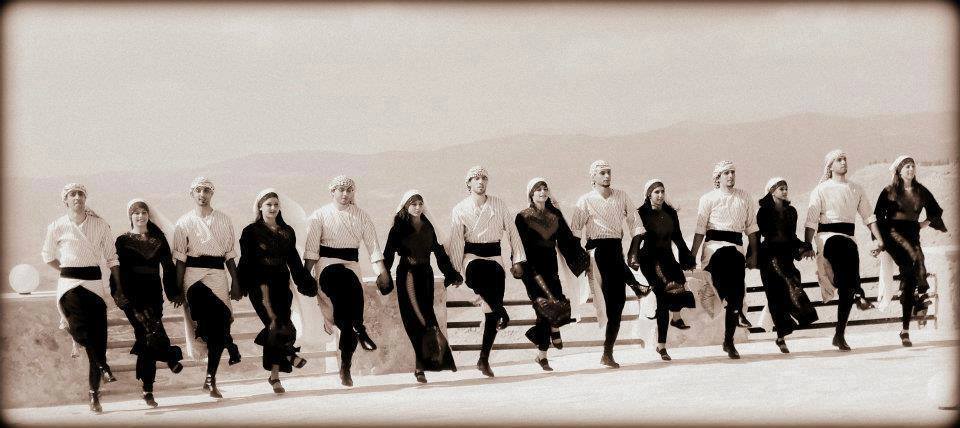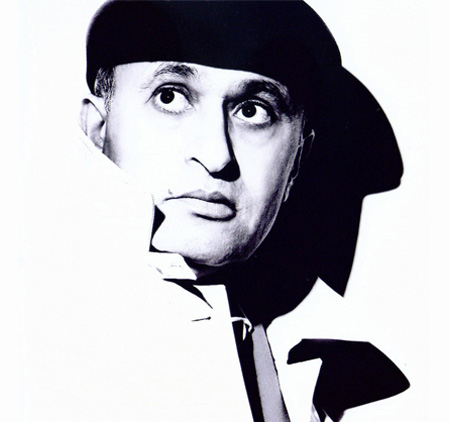
My special thanks to Sarah Canbel who took this amazing image of young Palestinians dancing the Dabkeh.
Thank you, Maha for suggesting this joyous topic to further describe the Palestinian culture.
All humanity on earth dance. It is the visceral and spontaneous expression of how we feel as individuals, or more often as a group. The obvious reasons are happy ones to mark a welcome occasion such as births, marriages, good harvest and so on. However, people dance to prepare for battle, on sad occasions, and for spiritual fulfilment. You only need to think of Native Americans, Eastern European Cossacks, African tribes, whirling dervishes and certain Muslim sects that use self-flagellation expressing more complex feelings than straight forward happiness. Certain forms of dance are so carefully prescribed, such as ballet, and are only performed by a few highly-trained individuals, to entertain the majority of people who wouldn’t even dream of imitating this art form. Dabkeh certainly needs training and physical fitness, nevertheless, anyone is encouraged to participate and follow the crowd. Dabkeh is a very forgiving art form and has room for the nimble of foot and the two left-footed clumsy characters like me.
There is a common Palestinian expression of affection often said by someone senior to a young man or woman that goes like this ‘my only wish is to live long enough to be able to dance at your wedding’. So, as a relative, friend or an invitee to a wedding, it is still the habit that out of affection, respect and show of shared happiness, everyone is expected to stand up and dance the dabkeh, even for a few seconds. Approaching her nineties, my mother insisted on standing up and dancing at my daughter Leila’s wedding in 2014 and had done so at subsequent family weddings ever since. An interesting aside, Leila met her future husband Nabil at a semi-professional dabkeh group in London, where their fellow dancers who were invited to the wedding, performed their take on dabkeh to the delight of guests, most of whom felt the urge to join in.
As a child, my earliest memory of dabkeh was when attending a three-day wedding celebration in our village. The courtyard of the house where the groom’s family lived was heaving with people and when darkness descended, kerosine lights appeared from various sources to compensate for the fading light. Women occupied one end of the courtyard and the men the opposite end. Suddenly, about 12 young men stood up and began chanting by repeating lines fed to them by their leader. Rhythmic clapping began slowly, almost apologetically, then it picked up pace and volume. Slowly but surely, the man in charge using a sword, gave out instructions and the men began to go round in a slow circular movement, interjected every few seconds by stamping on the dusty ground in perfect unison. All the while, the singing continued with words extolling the virtues of the groom, his father and ancestors, claiming un-substantiated death-defying deeds of heroism, but who was going to challenge their claims? The group moved slowly towards the main house with their chanting and hand clapping reaching febrile levels. Finally, the main door opened and out emerged the groom dressed in a way he never had before and unlikely to ever get another chance, looking like a prince with immaculate gumbaz (striped full-length dress with an open front like a dressing gown), held in place by the finest Damascene silk cummerbund and his head adorned with white Kufiyyeh and agal. The groom soon joined in the dancing, chanting and clapping, but with a certain amount of diffidence that befits his temporarily lofted status. This whole ritual is referred to as the ‘Groom’s Zaffeh’.
The following day, the actual wedding day itself (this is when the bride leaves her parental home for the last time and moves in with her new husband), singing and dancing had been going on all day mostly by women as they prepared food for the multitude of guests, which was pretty much the entire village. By way of wedding gifts, guests typically brought in rice, sugar, flour, olive oil and other non-perishable food products as a starter pack for the newly-weds. Sometime in the afternoon, a group of men from the groom’s side, including the lucky man himself, assembled and made their way to the bride’s house and again, singing, dancing and clapping to the beat of the tableh (hand carried drum). Most of the songs were bespoke to fit the main characters like the virtuous bride, the handsome, gallant groom, and the extraordinarily generous and brave father of the groom. Again, unsubstantiated claims that went unchallenged by any of the guests, for fear of missing out on the feasting to come. The chanting changed to a standard one when they finally arrived at the house and demanded the bride was brought out. Depending on the circumstances and distances involved, the groom might be expected to escort his bride the short distance back to his own home on foot. At that particular wedding, my grandfather’s Arabian steed was specially decorated for the occasion and the bride, resplendent in her white gown, matching headdress, gold sovereigns, jewelry and henna adorned palms, was helped by her two brothers to mount the horse, side-saddle. The bride’s collection party did a 180 degree turn and returned to the venue, this time their chanting was a simple standard ditty which boasts ‘we’re back and brought the bride with us’. The horse’s bridal was controlled by the groom himself, thus displaying his protective intentions, as well as his claim to be in charge of transport from day one. This variation on the groom’s Zaffeh, is unsurprisingly called the ‘Bride Zaffeh’.
The happy couple were installed in two elaborately decorated chairs on a slightly raised platform to be observed, admired, and teased by the audience. Finally, food was brought out in large trays of either ‘Mansaf’ or ‘Musakhan’. I will cover these two meals in future blogs.
Women and men were still segregated, while young boys had the flexibility to roam freely between the two clusters, feasting on the bountiful food. The bride and groom were given their own plates to eat together on the stage, thus giving guests more reasons to inspect the the temporary royals’ eating behaviour.
As day moved aside to make room for nighttime, the dancing singing and clapping, still separated along gender lines, continued unabated. Both men and women were organized by someone who decided on which songs to use, and what specific dance to accompany the singing. The men dancing reverted to the line formation and heavy stomping on the ground, which is the literal translation of the word ‘Dabkeh’. Women tended to dance as individuals with totally different steps from the men’s dabkeh steps, but according to a specific choreography. The dancing was finally brought to a temporary halt to allow the bride and groom to retire to their wedding bedroom, which was no more than a few meters away from the festivities. However, before the groom was allowed to leave and join his bride, he was pinched, slapped, and punched by his nearest and dearest young men until he visibly became agitated and almost belligerent. At this point, his father intervened and rescued the poor man before escorting him to the door of his nuptial bedroom.
You may have attended Palestinian weddings in recent times or have seen a dabkeh performance on YouTube, where boys and girls dance together in highly choreographed and entertaining routines. This is a modern take on dabkeh and I am all for it. Dabkeh is a form of expression of happiness and celebration that binds people of the same tribe, village, or region to come together in the good times and display their happiness and joy for life. Irrespective of its historic origins, dabkeh was first adopted by Syrians, Lebanese and Palestinians and on first glance, their variations are not noticeable however, a person from that region would be able to spot which dabkeh belongs to which group of Levantines. As a matter of fact, dabkeh has been adopted by other neighbouring nations and again, why not? The interest of the young generation and other societies of this art form will assure its survival for the future.
Long may we dance the dabkeh.
An example of a dabkeh dance can be viewed on YouTube link below:



Fascinating insight – thanks Mufid. I hope more are published – it provides a more interesting way of absorbing and understanding these rich and historical customs than dusty history books, much as I love books
Thanks for regaling us with this piece, Mufid. The few times I have attempted to participate in dabke – Faye’s wedding being one – I have failed miserably on account of it also being an intense workout! No doubt, however, that dabke truly is a beautiful form of expression.